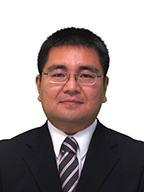Wearable Biosensors and Imaging System of Volatile Organic Components for Non-invasive Healthcare Monitoring

Speaker: Takahiro Arakawa
Affiliation: Professor, Tokyo Medical and Dental University, Japan
Abstract: A measurement of biophysical quantities of human body has been investigated for the medical and health care fields. In particularly, many wearable sensors have been developed and commercialized in the world because of their perspectives for human monitoring of relevant parameters in health care, sports and medical applications. Utilization of biophysical information with the systems is expected to provide proactive management of health that can improve public health and reduce medical expenditure. I introduce two topics of wearable biosensors: tear and saliva glucose biosensors. Our group have developed soft contact lens biosensor for tear chemicals, and oral cavity biosensors such as mouth guard biosensor for saliva analysis. I’ll present the challenges regarding the integration of biosensors into monitoring for biological information and daily medicine of human body.
Next, progress in analytical devices has enabled to measure minute amounts of odorous material and volatile chemical components in recent years. Body-derived gases (body gases) in particular, such as gases from halitosis and body odor, contain compounds produced by metabolic processes and ailment-specific components. Measurement of these volatile biological components is expected to simplify metabolic capacity evaluation, medical diagnostics, and disease screening. We have developed a novel two-dimensional fluorometric imaging system for ethanol vapor released from human breath and palm skin. This imaging system measures ethanol vapor concentrations as intensities of fluorescence of nicotinamide adenine dinucleotide (NADH) through an enzymatic reaction induced by alcohol dehydrogenase. This NADH fluorometric imaging system achieved the two-dimensional real-time imaging of ethanol vapor distribution (0.5-200 ppm). We applied the imaging system for measurement of breath ethanol vapor and skin ethanol vapor from a human palm. The system showed a rapidly and accurately responses and a visible measurement, which could lead an analysis to metabolism function at real time in the near future.
Biography: Dr. Takahiro Arakawa received his BS, MS degrees from Waseda University in 2002 and 2004, respectively. He finished the Ph.D. course in Nano-science and nano-engineering, and received the Ph.D. degree in “Microfluidic system for cell analysis” Waseda University in 2007. In 2008, he joined a post-doctoral research fellow of Japan Society for the Promotion of Science (JSPS, PD) at the Laboratory of Bioanalytical Chemistry the University of Tokyo. Since 2009, he was an Assistant professor of Tokyo Medical and Dental University. He has been a Junior Associate Professor of Tokyo Medical and Dental University (Department of Biomedical Devices and Instrumentation) since 2014. Dr. Arakawa holds 10 issued patents, and is also the co-author of more 20 books in Japanese and 2 books in English, and the co-author of 60 peer-reviewed publications in scientific journals. His research interests include microfluidics, micro electro mechanical systems, biosensors, optical systems and bio microsystems for medical applications.
For more information, contact Prof. Aydogan Ozcan (ozcan@g.ucla.edu)
Date/Time:
Date(s) - Apr 28, 2017
3:00 pm - 4:30 pm
Location:
E-IV Tesla Room #53-125
420 Westwood Plaza - 5th Flr., Los Angeles CA 90095
